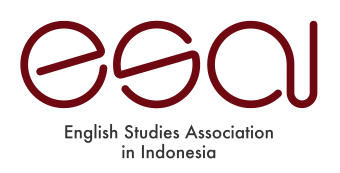Machine Translation and Fixed Expressions
Abstract
The objective of this research is to find out the potentiality of machine based translation, such as Google Translation for example, in translating fixed expressions. The framework for fixed expression will be based on Baker’s typology of equivalence (1992) and Alexander’s classification (1978). The research will then compare the result of the translation done by the machine and the ones made by human translators which is readily available in the public. The Source Language is in Bahasa Indonesia while the Target Language will be in English. The result of the research shows that Google has the possibility to translate morphological and syntactical level units of language, yet has no to little possibility to translate Sentence level unit of language.
Keywords: Machine Translation, Fixed Expressions
Full Text:
PDFReferences
Alexander, R. J. Fixed expressions in English: Reference books and the teacher, English Language Teaching Journal, 38(2), 127-134.
Badudu, J. S. (2008).Kamus peribahasa. Jakarta: Penerbit Buku Kompas.
Baker, M. (1992). In other words: A coursebook on translation. London: Routledge.
Bellos, D. (2014, October 7). How Google Translate works. The Independent.
Gonzales, A. Computer aided translation vs machine translation (TM vs MT). [Web log]. Accessed on August 16, 2012.
Lusiana, I. Ungkapan/Idiom in Materi Bahasa Indonesia. Accessed on January 19, 2015.
DOI: http://dx.doi.org/10.30813/jelc.v5i2.276
Refbacks
- There are currently no refbacks.



2.jpg)



